
List of sites that offer free public domain books in electronic and audio format.

List of sites that offer free public domain books in electronic and audio format.

Students will create a flowchart showing the evolution of a specific technology including failed attempts at advancement. This task includes research and understanding the iterative process. Easily differentiated.

Students will read a variety of texts to include Fiction and Literary Nonfiction, Poetry, and Expository Nonfiction to complete the following tasks:1) read and annotate both a fiction and nonfiction paired passage2) complete the Author's Craft Graphic Organizer for each text.3) write a paragraph comparing and contrasting the two texts using the graphic organizer for guidance.

Check out how a Science 6 CLT from Arlington, Virginia partnered with the school librarian, resource teacher for the gifted (RTG), SPED teacher, and English Learner (EL) teachers to engage and support all students in a personal research project...remotely! We are sharing our project resources, experiences, and how this project personalizes distance learning.

Remix of https://edsitement.neh.gov/lesson-plans/citizen-vi-train-woman-standing-claudia-rankine Adding a variety of texts to compare and connect to the original poem activity

After reading a variety of nonfiction articles, students will select one article to read, annotate, and complete the Exploring NF Text Graphic Organizer with their chosen text.Students will also summarize their chosen article by creating an objective and true summary including a strong main idea and supporting details.

Students will read nonfiction articles on a topic of their choice to create an informative article that incorporates important details, evidence, and uses vocabulary that expresses ideas precisely and concisely. Students will include one purposefully crafted visual text feature in their writing. Students will organize their writing in a way that aids comprehension for the reader.

Students will demonstrate their ability to write an expository text by selecting a topic of their choice to write 3-5 short paragraphs, each following a different organizational pattern. The writing should incorporate a main idea and important details while choosing language that expresses ideas precisely and concisely. Students should also show the best tone and voice in their writing to fit each organizational pattern and to vary their sentences to make their writing interesting.
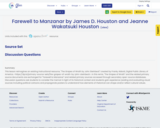
This lesson reimagines an existing instructional resource, "The Grapes of Wrath by John Steinbeck" created by Franky Abbott, Digital Public Library of America.
In this remix, "The Grapes of Wrath" and the related primary source documents are exchanged for "Farewell to Manzanar" and related primary sources accessed through secondary open-source databases.
Discussion questions ask students to consider the memoir in light of its historical context and students gain experience reading and evaluating visual sources including political cartoons and propaganda posters to understand how elements of rhetorical can shape and/or reflect cultural values.
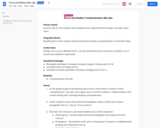
As 5th grade students are learning about force and motion in science, these comprehension “mix-ups” are a great way to monitor students’ understanding of the content along with checking reading comprehension.
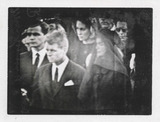
This represents an entire unit designed to be cross curricular in nature for English 11 and VA/US History. The Historical Fiction Research Unit Google Doc can be found here and contains various links to additional resources to support this unit of study.The "before", "during", and "after" are included in each day for this series. The unit will take approximately 12 days.
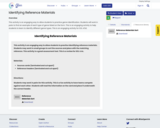
This activity is an engaging way to allow students to practice genre identification. Students will work in pairs to find an example of each type of genre listed on the form. This is an engaging activity to help students to learn to identify different genre types. This is an engaging activity for SOL 4.5d.

Today, you want to discuss how artists can help bring awareness of environmental changes through art. Introduce a few artists that use environmental change as their theme. It is a good idea to have several artists that use different kinds of mediums. Examples: Nils-Udo, Andy Goldsworthy, Richard Shilling, Agnes Denes, Chris Jordan, Benjamin Von Wong, Olafur Eliasson, Amanda Schachter, Rachel Sussman, and Mathilde Roussel. These are some environmental artists of different backgrounds and diversity that work in different medians. Discuss how posters have been used to educate others on environmental changes. Show your teacher’s example of an educational and artistic environmental poster. Talk about your poster and the environmental concept that you chose as an example of not only the artwork but on a presentation as well.

In this lesson, students examine the poetry of Amanda Gorman, who was chosen to read her poem “The Hill We Climb” at President-elect Joe Biden’s inauguration on Jan. 20, 2021. Gorman’s poem will complement Biden’s message and themes of “unity.”

As 5th grade students are learning about matter in science, these comprehension “mix-ups” are a great way to monitor students’ understanding of the content along with checking reading comprehension.
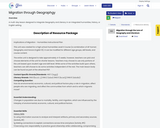
A multi-day lesson designed to integrate Geography and Literacy in an integrated humanities, history, or English setting.

Final test after completing the book
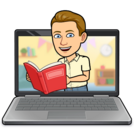
This lesson is part of a unit based on a road trip. In this lesson students use the given website to research diffrent attributes of cars and trucks that would make them desirable choices.
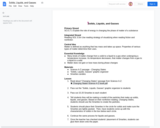
5th grade students that are learning about the phases of matter in science will read a Science A-Z book and complete an activity to show their understanding of the different phases.
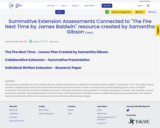
This resource is intended as a Summative Extension activity to the resource created by Samantha Gibson entitled "The Fire Next Time." The original source contains a detailed lesson plan that incorporates primary source documents in order to compare and contrast leading figures of the Civil Rights movement. This extension activity is intended to provide a synthesis activity that asks students to consider and explore a modern-day example of social protest and evaluate various approaches to the same issue.
Optional extension activities include a collaborative persuasive presentation that requires research and rhetoric skills to be successful and/or an individual written research paper.